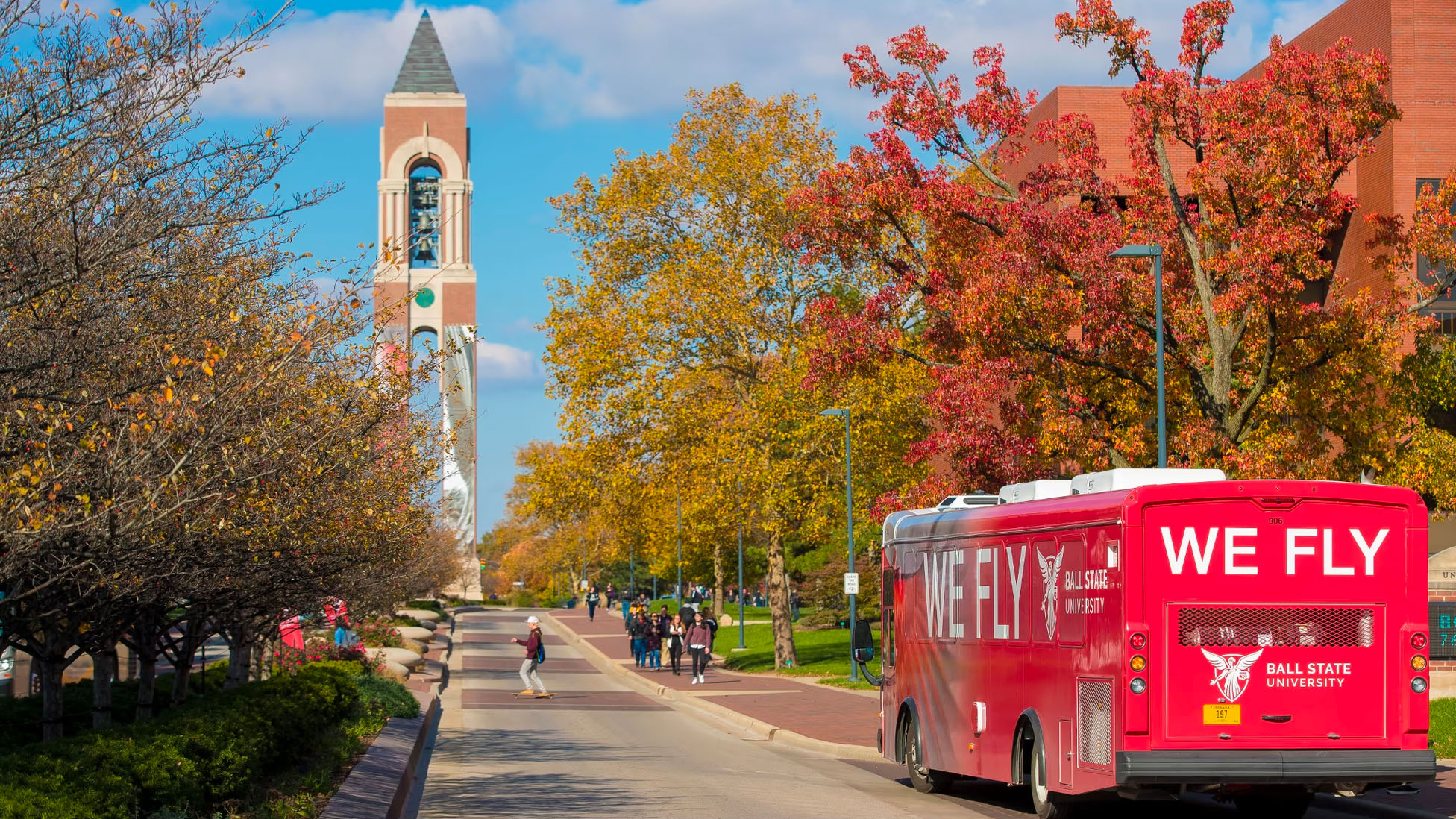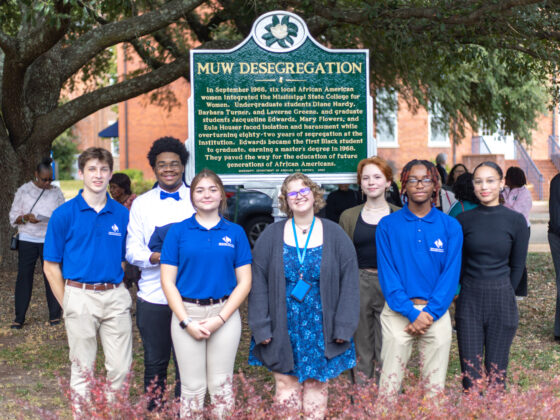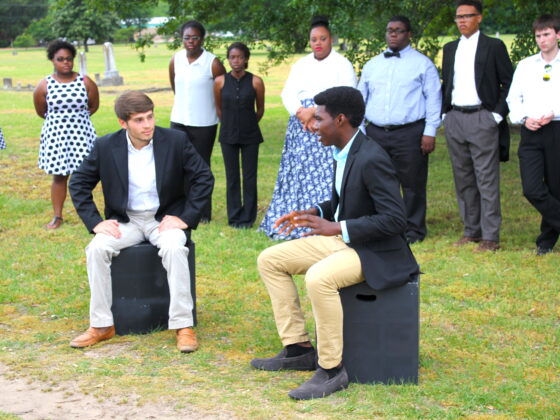Here is why I think this report from central Indiana matters, for people who don’t happen to live there themselves.
What Deb Fallows and I saw in Muncie, Indiana, is as stark an illustration as we’ve recently come across of a gap with huge implications for America’s civic and political prospects.
- On one side of this gap (whose existence has been a running theme in this space) is the growing reality of experimentation, freshness, practicality, and often progress in many American communities and regions.
- On the other side of the gap is the extremely faint national-level awareness of such developments, or what they might collectively amount to in the years ahead.
For now, in two installments, I’ll mention some developments that we learned about on a recent trip to Muncie, Indiana, and that we had no idea of before we visited the town. I will bet that the 98 percent of Americans who don’t live in Indiana have not heard of these efforts either, since as far as I can tell, they’ve rarely if ever been mentioned in the national press.
Ninety-eight percent? Yes: The state’s population is about 6.5 million, and the country’s population is more than 325 million, or about 50 times as great. By the way, this makes Indiana that rare state with a mathematically “fair” representation in the U.S. Senate. One out of every 50 Americans is a Hoosier, and the two senators from Indiana cast one-fiftieth of the Senate’s total votes.
(To illustrate the range among other states: About one American in every 600 lives in Wyoming, and about one in eight lives in California. Each state of course has the same two Senate votes. About one American in 450 lives in the District of Columbia, and they have no Senate votes at all. I offer these numbers not as a veiled complaint: the Washington, D.C., license plate on my car, which bears the District’s official slogan, “Taxation without representation”—now that is a complaint. Rather, these are reminders of the way centuries of migration and changed settlement patterns among the states have affected the fundamentals of constitutional architecture. )
My goal in this first piece is to introduce the idea of activities worth national notice, which usually escape notice because they are happening “out there.” The developments I have in mind from Muncie, in this report and the next, are:
- a specific local response to a global challenge;
- a conceptual shift that parallels trends we’ve seen elsewhere;
- a major institutional and civic rearrangement that is unique in Indiana and has very few precedents anywhere else in the country.
Deb and I will return to Muncie for further reporting trips. But here is Part One of what we’ve learned for now.
We spent time in Muncie in March as part of the I-69 tour through Indiana discussed in these previous posts: one about the tiny town of Angola, one about the big industrial city of Fort Wayne, and one about the journey as a whole. The trip was a combined project of New America–Indianapolis, of Indiana Humanities, and, for the Muncie stop, also of Ball State University.
Muncie is another longtime manufacturing center in this most manufacturing-centric of all states. It has about 70,000 residents and is the subject of one of the most famous works in American sociology: Middletown: A Study in Modern American Culture, by Robert and Helen Lynd, which began in the 1920s. Middletown was Muncie; Ball State University, in Muncie, now has a Center for Middletown Studies, which among other projects runs a civic blogging site called Everyday Life in Middletown. (A book called The Other Side of Middletown, about the Muncie story from the perspective of its African American residents, came out in 2004.)
In the world of commerce, Muncie is associated with the Ball family, of glass-jar fame. If you’ve ever seen a classic American glass jar of jam or preserves, you’ve seen the swirly script Ball logo. What became the Ball Glass Manufacturing Company started in Buffalo, New York, in the 1880s. It looked for new premises after a fire destroyed its Buffalo factory in 1886.
In those days, natural gas was being discovered in Indiana, so the Ball brothers moved to Muncie for its cheap gas supplies (for their energy-intensive glassmaking business), and over most of the next century were the dominant business force.

The Ball Corporation moved its headquarters to Colorado more than 20 years ago, but the mark of the family remains all over town, from the name of Ball State University (which started out as a teachers’ college in the late 1800s and was recapitalized by the Balls around 1920) to a number of charitable foundations to historic structures, museums, statuary, and public arts. This brings us to the world of pop culture, where Ball State enjoys the glow of one of its prominent alumni and benefactors: David Letterman.
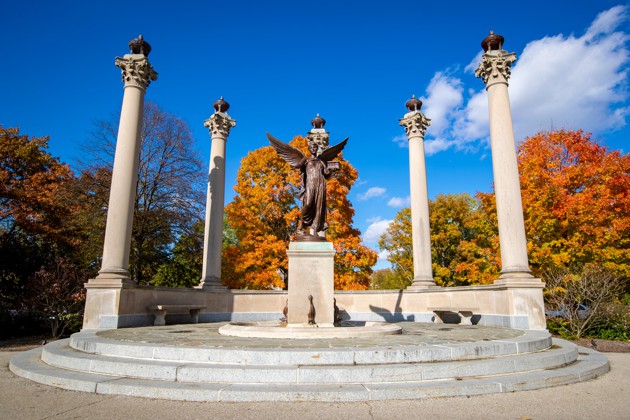
Here is the summary of what we learned in Muncie and at Ball State.
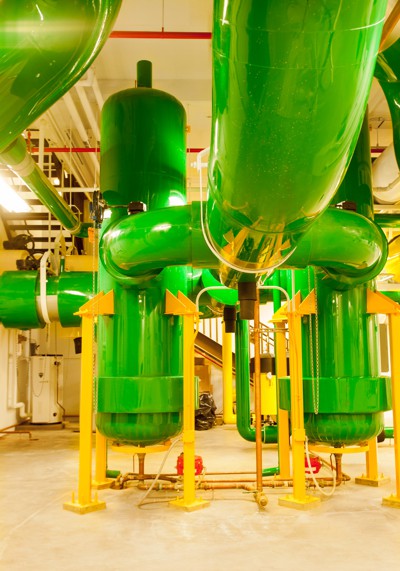
Specific local action toward a global goal: Ball State University is the biggest single enterprise in town, and also the biggest energy consumer. Starting 10 years ago, a Ball State official named Jim Lowe began exploring possibilities of geothermal energy as a power source for the campus. In the years since, the university has drilled thousands of “boreholes” on campus, and installed more than 1,000 miles of piping, for geothermal-energy transfers. (Earth’s baseline temperature heats water pumped through the system in the winter, and cools it in the summer.) The system is said to be the largest of its kind in the United States; Lowe told us that it would reduce Ball State’s carbon footprint by half.
“We find history repeating itself,” a Ball State publication wrote recently. “The Ball brothers came to Muncie to reduce costs for their glass business by using ‘free’ energy in the form of natural gas pulled from the ground. Now, the university they founded will save $2 million annually in operating costs by using a different form of ‘free’ energy pulled from the same ground in thermal energy.”
Universities as civic actors: Everyone knows about “town-gown” separations, where a college or university has a prickly arm’s-length relationship with the community where it happens to be placed.
Everyone also knows about the classic “college town,” a settlement that hangs on mainly thanks to the business a university brings in.
Deb and I have become more and more interested in the “university hall as city hall” model—that is, a relationship in which a university’s leadership decides that it shares responsibility for the surrounding community’s economic and civic development (as opposed to simply wanting to exercise control over local affairs).
We’ve seen examples of this, as we’ll describe, in places like Eau Claire, Wisconsin, where the University of Wisconsin at Eau Claire has become a major civic-convening force; in nearby Kenosha, Wisconsin, through the emerging convening work of Carthage College; in Wichita, Kansas, where Wichita State University is playing a central economic and technological role; in Hattiesburg, Mississippi, with the involvement of the University of Southern Mississippi; in the much larger city of Phoenix, where the efforts of Arizona State University have had an effect statewide and around the country; and in a number of other locales.
In Muncie, the town-gown relationship was historically separate enough that when the Lynds set out their criteria for a typical American Middletown, they said it should not be a university town—and they thought that Muncie qualified.
Now that is changing, in a dramatic way. The change involves the seven people you see below. In Muncie Part Two, coming tomorrow, more about the next big point: how a university has decided to involve itself centrally in civic affairs, and the surprising project it has undertaken within the town.


